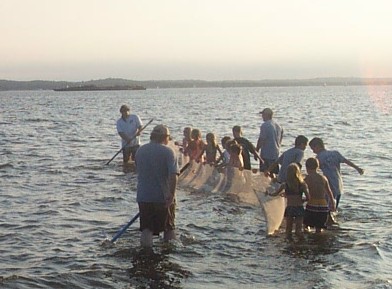Come Participate in the 2nd BioBlitz of Sandy Hook September 18-19, 2015!
BioBlitz Recap and Results!
The American Littoral Society, in partnership with the National Park Service (NPS), organized the 2nd BioBlitz of Sandy Hook from 3pm Friday, September 18th through 3pm Saturday, September 19th 2015. A BioBlitz is part contest, part festival, part educational event, and part scientific endeavor. The concept was developed by world renowned entomologist and champion for biodiversity, Edward O. Wilson. Sandy Hook BioBlitz 2015 created a hands-on opportunity to educate the general public about the biodiversity of species found in this popular coastal area and demonstrated that biodiversity matters in our own back yards and not just in exotic locales. It provided a unique opportunity for biologists to collaborate with colleagues and students across many disciplines and for students to work in the field with experts as they gathered important data about coastal biodiversity that can be shared with others.

How will it work?
This event engaged teams of scientists, amateur naturalists, and volunteers in a 24-hour race to see how many different species each team could identify on Sandy Hook before the clock runs down. The data provided a snapshot of how many different species are present – or the biodiversity of Sandy Hook. Collected at regular intervals over time, these snapshots provided important clues about changes in biodiversity caused by climate change, sea-level rise, and other human impacts on the unique ecosystem that is Sandy Hook.
While the scientists are out in the field, the American Littoral Society and colleagues presented complementary educational events for the general public.
Scientists, Amateur Naturalists, Volunteers Needed!
Scientists, amateur naturalists, and volunteers worked together in 4-hour shifts during the BioBlitz.
- Scientists, Amateur Naturalists: expertise in identifying species of birds, fish, fungi, mammals, marine invertebrates, terrestrial invertebrates, plankton and algae, herptiles (amphibians and lizards), and plants
- Volunteers: Base Camp (help with registration, food preparation, and general information), GIS, photography, and social media
T-shirts, food, a rest area, and plenty of coffee was provided. For additional information, contact Stevie Thorsen: Stevie@littoralsociety.org



 Contact us
Contact us